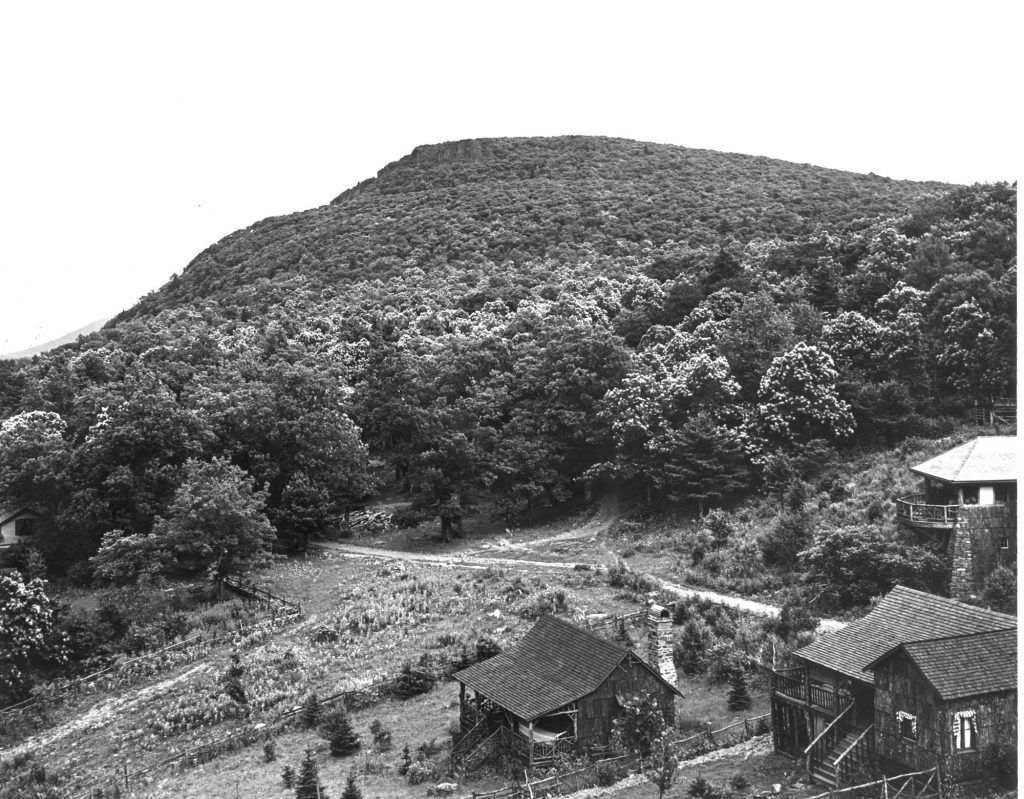Many of us learned of the Ents from J.R.R. Tolkien – talking trees whose name is, in fact, derived from the Anglo-Saxon word for giant. While Tolkien’s work may be classified as fantasy or fiction, anyone who has spent time in the forest knows that the trees most definitely speak…you just have to listen.
Most know the tragedy of our greatest Ent, the American chestnut. If you do not, I’ll give you the highlights. The American chestnut once dominated eastern forests growing to almost 100 feet tall with a diameter of nearly 10 feet. In Pennsylvania alone, it was estimated to have comprised 25-30% of all hardwoods and was even known as a keystone species! And the American chestnut is 99.9% perfect – grows rapidly and produces a large annual seed crop; nut production beginning at 7-8 years old; nuts consumed by deer, turkey, bears, squirrels, and any other species that eats a nut, even the passenger pigeon; and wood that is straight-grained, strong, easy to saw and split, and rot-resistant.
While it is 99.9% perfect, it is the 0.01% that was its demise. Enter Cryphonectria parasitica, the microbe that was its downfall. Cryphonectria parasitica, aka chestnut blight, is a fungus that was introduced to North America in the late 19th century, an import from Asia hitchhiking on some Japanese chestnut trees.
Japanese and Chinese chestnut varieties had evolved with the fungus and developed resistance. They show signs of infection but are not killed. Not so for the American chestnut. It had never seen Cryphonectria parasitica before and had no idea how to respond. Oxalic acid produced by the fungus is toxic to the tree which eventually succumbs to the infection. By 1940, 3 to 5 billion (that with a “b”) chestnut trees had been lost.
Our mighty Ent was no more – reduced to stump sprouts that eventually perish like it’s ancestors.
But like the heroes in Tolkien’s novels, we don’t give up. We have been chasing a blight-resistant American chestnut since the crash. The American Chestnut Foundation (TACF), founded in 1983, is solely dedicated to restoration of the American chestnut. In 1990, the New York chapter of TACF and the State University of New York’s College of Environmental Science & Forestry (ESF) began the American Chestnut Research and Restoration Project. Using basic and applied research in biotechnology, the project is making great strides in giving the American chestnut the amour it needs to fight Cryphonectria parasitica.
Can this tragedy have a fairy tale ending? Can our beloved Ent rise from the ashes?
Maybe with a little science sorcery.
Molecular plant pathology research identifies genes that allow plants to defend themselves against disease (among other things). With this knowledge, researchers are trying to build a better, stronger, faster American chestnut – genetically speaking. What the American chestnut really needs is oxalate oxidase, an enzyme that detoxifies oxalic acid.
Wheat genes stage left!
Wheat has a gene that codes for this oxalic acid fighting enzyme. Many grasses carry it too. It is a natural defense gene that helps it ward off disease. After a little dicing and splicing (slightly more complicated than that but this is a blog), this gene was added to the American chestnut. The first transgenic American chestnut trees were planted outside in 2006.
There are several advantages to this type of solution to the American chestnut’s problem. First, it’s not a pesticide and does not kill the fungus. Why is this important? There is no selective pressure on the fungus improvise, adapt, and overcome. The fungus becomes a saprophyte (organism that only live on dead tissue) and not a pathogen (organism that attacks the living). Great!
Because this gene detoxifies oxalic acid only, it is very unlikely to have any effect on non-target organisms not producing said acid. Perfect!
Lastly, this gene is very simple to detect in any chestnut making it easy to ID and follow them in any restoration program. Bonus!
These trees are currently undergoing extensive field trials and ecological studies. Soil fungus, aquatic insects, terrestrial insects, wildlife, environmental persistence, tree growth rates, pollen flow, and surrounding plant communities in the presence of transgenic chestnuts are all being evaluated.
So far, all signs point to go with plans of making these blight-resistant American chestnut trees available to the public in 5 years! So mark your calendar for 2022.
What would this mean for Pennsylvania forests (all eastern forests really)?
More squirrels! That’s right when the chestnut disappeared, squirrel populations declined. But seriously losing the most dominant, mast-producing tree in our forests was HUGE and its return would be just as HUGE.

Chestnut Burr, Meadowview Research Farms, VA. Photo credit: The American Chestnut Foundation
The return of a tree that produces mast EVERY year would mean a consistent, stable food source for a lot of species. The Allegheny woodrat, that is barely making it on our rocky ridgetops, could count on chestnuts to fill its caches each fall. The same can’t be said of oaks.
Critters (and the list is long) could look forward to a mast smorgasbord each and every fall. Well-fed critters are strong critters. Higher survival and reproductive rates means more diverse and resilient ecosystems that can withstand random and periodic attacks like new diseases and severe weather events.
Like the march of the Ents, the return of the chestnut would be epic.
PGC Deer and Elk Section
Check out Reviving the American forest with the American chestnut, a TEDx talk by Dr. William Powell, principle researcher on the project at ESF
If you would like to receive email alerts of new blog posts, subscribe here.
And Follow us on Twitter @WTDresearch

